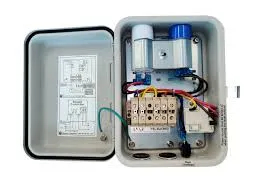The Versatility and Importance of Rubber Electrical Tape
Electrical tape is an essential tool in the electrical and DIY industries, but among the various types, rubber electrical tape stands out due to its unique properties and wide range of applications. Rubber electrical tape is designed to provide superior insulation and protection, making it an invaluable asset for both professional electricians and amateur DIY enthusiasts.
Composition and Features
Rubber electrical tape is primarily made from a blend of elastomeric materials, which give it durability, flexibility, and excellent conformability. This composition allows it to withstand extreme temperatures, moisture, and UV radiation, making it suitable for both indoor and outdoor applications. The tape is often characterized by its excellent adhesive properties, ensuring that it sticks firmly to surfaces without the risk of peeling off, even in challenging environments.
One of the standout features of rubber electrical tape is its self-fusing capability. When stretched and wrapped around a conductor, the tape forms a solid, waterproof barrier that prevents electrical leakage. This property is particularly beneficial for high-voltage applications, where the risk of electric shock is heightened, and hermetic sealing is necessary for safety.
Applications in Electrical Work
Rubber electrical tape is extensively used for insulating electrical wires and connections. Its high dielectric strength makes it ideal for protecting against short circuits and electrical fires. Electricians often rely on this type of tape when making repairs or extending wiring, as it ensures that connections remain safe and secure. In addition, it is applied to cover exposed wires in automotive and other machinery to prevent accidental contact and to maintain the integrity of electrical systems.
rubber electrical tape

The high resilience and adaptability of rubber electrical tape also make it an excellent choice for bundling wires. In industrial settings, where cables and wires can be numerous and unwieldy, using rubber electrical tape to organize and bundle these components not only improves safety by reducing tripping hazards but also enhances the overall aesthetics and durability of installations.
Benefits Over Other Tapes
While there are various types of electrical tapes available, such as vinyl and cloth tapes, rubber electrical tape offers unique advantages that set it apart. For instance, while vinyl tape is effective in regular insulation tasks, it may not provide the same level of waterproofing and temperature resistance as rubber tape. Cloth tape, although versatile, does not possess the same elasticity and self-fusing characteristics that rubber electrical tape does.
Additionally, rubber electrical tape is particularly advantageous in environments that experience temperature fluctuations. It maintains adhesive properties across a wide temperature range, ensuring that it remains effective whether in hot, humid conditions or in cooler, drier spaces. This resilience is vital for outdoor electrical applications, where exposure to the elements can wear down lesser tapes.
Conclusion
The significance of rubber electrical tape in electrical work cannot be overstated. Its unique composition and properties make it a superior choice for a wide range of applications, ensuring safety and reliability in electrical systems. Whether it’s insulating wires, protecting against moisture, or bundling cables, rubber electrical tape remains a go-to solution for professionals and DIY enthusiasts alike. As technology progresses and electrical systems become increasingly complex, the role of rubber electrical tape will likely continue to evolve, maintaining its status as an indispensable tool in the electrical field.
In summary, investing in high-quality rubber electrical tape is a wise decision for anyone involved in electrical work, providing peace of mind and ensuring a safe working environment. Understanding its benefits, features, and applications can significantly enhance the quality of electrical installations and repairs, paving the way for safer and more efficient electrical systems.
-
XIANGFAN Rubber Tape-Ultimate Solutions for All Your Insulation NeedsNewsJun.24,2025
-
XIANGFAN Rubber Tape-Protection for Industrial and Residential ApplicationsNewsJun.24,2025
-
XIANGFAN Rubber Tape: Superior Safety and Sealing for Demanding EnvironmentsNewsJun.24,2025
-
XIANGFAN Rubber Tape: Reliable Solutions for Every Electrical ChallengeNewsJun.24,2025
-
XIANGFAN Electrical & Industrial Tape: Powering Reliability Across IndustriesNewsJun.24,2025
-
XIANGFAN Electrical & Industrial Tape: Excellence in Every ApplicationNewsJun.24,2025
